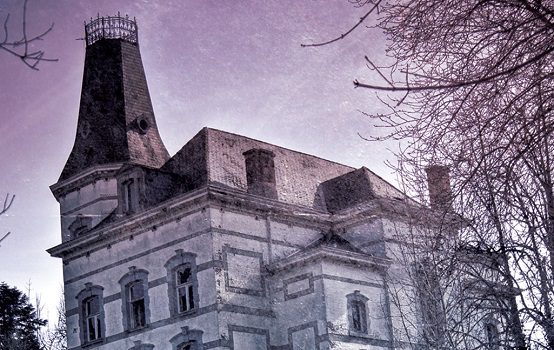The Joy and Terror of Shirley Jackson

For Shirley Jackson, a writer who reveled in ironies, one of the greatest is that her name is synonymous with a 3,773-word story that barely scratches the surface of her rangy genius. Written when she was 31 and pregnant with the third of her four children, “The Lottery” juxtaposes the collective barbarism of New Englanders who gather each year to stone to death a randomly selected neighbor against the mundane details of mid-20th-century domesticity. (The women wear “faded house dresses” and slips of paper are drawn from a shabby, black wooden box.) Jackson’s uninflected tone baffled many readers of The New Yorker, where the story was first published in June 1948, with some canceling their subscriptions in disgust and others inquiring gamely how they could attend such lotteries for themselves. What’s most surprising about “The Lottery” is its inevitability. Because we’re unruffled when the victims are jeered—or worse—we experience a creepy complicity with the perpetrators.
Jackson, who described herself in an early book jacket as “perhaps the only contemporary writer who is a practicing amateur witch,” played up the same incongruities that make “The Lottery” such catnip for high-school English classes in her account of writing this famous tale. The idea for “The Lottery” came to her on a sunny June morning while pushing a toddler in a stroller. Jackson says that she did not permit herself to sit down at her typewriter until she had put away all the groceries, and she finished the story in a single sitting—before her five-year-old son came home from kindergarten at lunchtime.
New Yorker editors were divided over “The Lottery,” explains Ruth Franklin, author of Shirley Jackson: A Rather Haunted Life. Gus Lobrano and Harold Ross were enthused, while dissenter William Maxwell labeled the story “contrived” and “heavy handed.” “I hate it” was Jackson’s own assessment near the end of her brief life.
If Jackson were writing herself as a character, she could not have invented more strikingly improbable beginnings. Born in 1916 in San Francisco, Calif., to social-climbing parents intent on raising a marriageable debutante, Jackson maintained close family ties throughout her lifetime, while privately capitulating to her own outrageousness, making a virtue of her intellectual appetites, disheveled appearance, and myriad addictions: Pall Malls, amphetamines, chocolate, Alka-Seltzer, and, in later life, outlandish quantities of butter.
This bifurcation came at a cost. Franklin maintains that Jackson’s phobias and morbid obesity indicate a deeply troubled psyche. She draws parallels to Sylvia Plath, another singular talent with a conventional and censorious mother, in that neither could quite shrug off a desire for maternal approval. “Though Jackson would later express her distress over the hostile letters she received from readers in the wake of ‘The Lottery,’” writes Franklin, “that sudden deluge, largely from faceless strangers, seems less damaging than the drops of poison she grew accustomed to receiving from her mother every few months—and to which, almost without fail, she dutifully and cheerfully responded.”
A swashbuckling storyteller, especially given the staid world of biographers, Franklin arranges a suitably dramatic entrance for Jackson’s husband Stanley Edgar Hyman, introducing him through an extraordinary photo taken by Philippe Halsman. As a way of revealing character, Halsman invited his subjects to jump, and he captured Hyman, a New Yorker writer dressed in jacket and tie, with eyes closed and fists clenched, mid-cannonball, hovering several feet in the air. As Franklin observes, Hyman “would not be satisfied with anything less than the best jump he could possibly achieve,” and he later hijacked both his life and Jackson’s with his exacting habits and manic drive. The less successful of the pair, Hyman bullied Jackson whenever she wrote letters or anything else he found unmarketable, and insisted on his own sexual license, openly chasing women even during the earliest days of their relationship. Yet the marriage was complicated, and Hyman clearly helped Jackson, too. It was Hyman’s Bennington appointment that paved the way for the rumpled academic lifestyle that suited Jackson so perfectly for so many years. And it was his career that opened the door for pivotal friendships with Howard Nemerov, Ralph Ellison, and Dylan Thomas, with whom Jackson had a drunken one-night stand that loomed large in her imagination for years afterward.
In many ways, Franklin is a far more incisive literary critic than biographer. A frequent contributor to The New Yorker and Harper’s, she does a terrific job of comparing Jackson to literary predecessors like Nathaniel Hawthorne and, more cursorily, Henry James. Above all, though, Franklin ably excavates the crowning irony of Jackson’s career—that she was a celebrated memoirist and even a prototype for today’s “mommy bloggers”—at the same time as she authored short stories and novels that unflinchingly examine the casual cruelty of ordinary Americans and the psychic toll this cruelty takes. For Jackson, the domestic sphere could be a source of tremendous comfort. It was no mere marketing ploy that drove Jackson to package cute anecdotes about her four children in her bestselling Life Among the Savages and Raising Demons. According to accounts by her grown children, she was an imaginative and loving mother, cooking extravagant meals, indulging idiosyncratic passions, and orchestrating marathon reading projects at the dinner table.
Designed for loved ones to live in together, houses could also be the sites of unbearable loneliness, as Jackson shows in the justly famous opening of The Haunting of Hill House: “Hill House, not sane, stood by itself against its hills, holding darkness within … silence lay steadily against the wood and stone of Hill House, and whatever walked there, walked alone.” These words proved prescient for Jackson, who, after many years of finding refuge in marriage and motherhood, became unmoored when Hyman not-so-discreetly pursued a love affair with Jackson’s friend Barbara Karmiller. Alienated, Jackson succumbed to crippling agoraphobia that overwhelmed her ability to perform routine errands outside the home and—in the end—to write.
The ebullience and terrors of home life unite in Jackson’s unparalleled masterpiece: We Have Always Lived in the Castle. Narrated by the deranged yet winsome Merricat, the novel is ostensibly a locked-room murder mystery with only two suspects who might conceivably have put arsenic in the family sugar bowl. Here are the arresting opening lines:
My name is Mary Katherine Blackwood. I am eighteen years old, and I live with my sister Constance. I have often thought that with any luck at all I could have been born a werewolf, because the two middle fingers on both my hands are the same length, but I have had to be content with what I had. I dislike washing myself, and dogs, and noise. I like my sister Constance, and Richard Plantagenet, and Amanita phalloides, the death-cup mushroom. Everyone else in my family is dead.
Sinister premise notwithstanding, We Have Always Lived in the Castle makes the case that domestic coziness can be a source of weird salvation. Franklin quotes a lyric passage from the novel that highlights the magic of nurturing:
All the Blackwood women had taken the food that came from the ground and preserved it, and the deeply colored rows of jellies and pickles and bottled vegetables and fruit, maroon and amber and dark rich green stood side by side in our cellar and would stand there forever, a poem by the Blackwood women.
In the end, as Franklin beautifully puts it, there is no explanation for the murders beyond that “Female power and creativity, bottled up too long, turn lethal.”
 Franklin’s analysis of Jackson’s work is consistently sharp, but her shortcomings as a biographer are evident in what she chooses to describe and what she omits. She energetically pursues tangents, everything from minutely observed histories of Bennington College and Burlingame to digressions about the Salem witch hunts and, inexplicably, John Cheever’s “The Enormous Radio.” While the best biographers are smitten with their subjects, Franklin seems indifferent and even a trifle embarrassed, occasionally giving Jackson a wide berth as if she were a bore at a cocktail party.
Franklin’s analysis of Jackson’s work is consistently sharp, but her shortcomings as a biographer are evident in what she chooses to describe and what she omits. She energetically pursues tangents, everything from minutely observed histories of Bennington College and Burlingame to digressions about the Salem witch hunts and, inexplicably, John Cheever’s “The Enormous Radio.” While the best biographers are smitten with their subjects, Franklin seems indifferent and even a trifle embarrassed, occasionally giving Jackson a wide berth as if she were a bore at a cocktail party.
Because Franklin seems jazzed to be writing about anything except her subject, Jackson is a ghost-like figure hovering against the vivid backdrop that Franklin paints. Granted, during years of suffering from clinical anxiety, Jackson devised endless ways to disappear, but I’m not sure that Jackson’s own misdirections quite let her biographer off the hook. As Laura Miller wrote in her astute introduction to the reissuing of Hill House, “The psychological ghost story is as much about the puzzle of identity as it is about madness.” In Franklin’s biography, Jackson can be inferred from her arresting novels and stories, but the beating heart, the true identity, of this “rather haunted” woman remains a mystery.
Elizabeth Judd is a financial writer in Maryland.
Comments